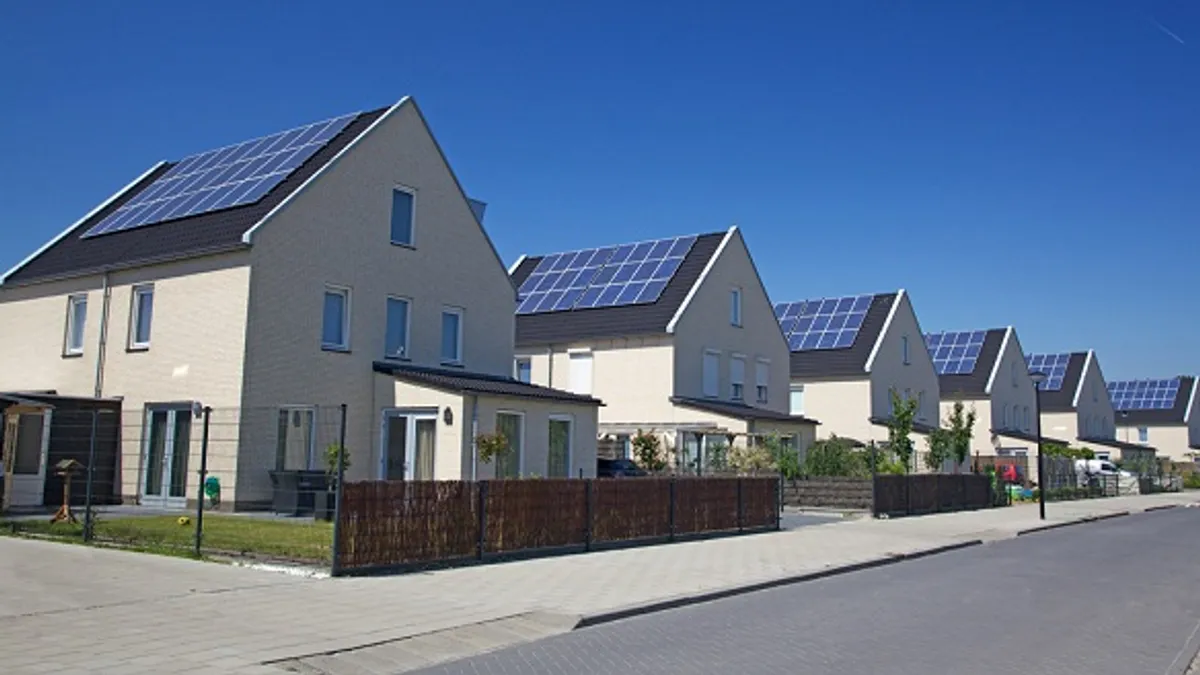Correction: An earlier version of this article incorrectly stated that SDG&E's Borrego Springs microgrid has 100 MW of capacity. It has 30 MW.
First it was just the grid. Then we had microgrids. And now, it seems an even smaller type of energy system – the nanogrid – is poised for significant growth and could potentially challenge utilities to change the way they do business.
New research from consultancy Navigant Research predicts the worldwide market for nanogrids including solar photovoltaic generation and energy storage will rise at a startling clip over the next decade, from $1.2 billion in 2015 to $23.1 billion in 2024. Compare that to the firm's prediction last year for microgrid growth (from $2.4 billion annually in 2014 to $5.8 billion in 2023) and the larger nanogrid market, where it sees global vendor revenue growing from $37.8 billion in 2014 to $59.5 billion in 2023.
Navigant principal research analyst Peter Asmus said declining costs of storage and solar power, along with “an explosion of investment in creating a new distributed energy resource landscape,” are helping the segment grow rapidly. That growth could upend the utility's business model.
“Generally speaking, they could represent a threat to utilities in some ways, just like a microgrid is also a threat,” Asmus said.
Navigant defines nanogrids as a grid-connected system with a capacity of 100 KW or less, or a 5 KW off-grid system. Typically this is a single load, perhaps a residential home or commercial building. Their small size and configurations can mean they face fewer regulatory hurdles, and with interest growing in the aggregation and integration of distributed resources the systems could grow quickly and cause problems for the traditional utility business model.
But in the last few years, more utilities are developing microgrids themselves, Asmus noted, which represents not just a strategy change but the potential to integrate more nanogrids down the line.
Duke Energy, San Diego Gas & Electric, and Central Hudson -- along with many other utilities -- have all been working to integrate microgrids into their systems. And Asmus said that while nanogrids focus on smaller loads, the new wave of microgrids, which can help integrate their younger siblings, are growing in size and are now used for large-scale applications. The SDG&E microgrid, for instance, is a 30 MW system that utilizes solar energy and powers an entire community.
“That's a major shift. When I started this research in 2009, by far the vast majority of microgrids connected to the grid were not utilities, and in fact utilities were trying to stop microgrids," Asmus said. "And in some cases that's still true.”
But with every home a potential nanogrid, and regulations allowing them to be installed with little fuss, widespread aggregation could add significant distributed resources to a utility's portfolio. Whether it's the utility doing the aggregating or a third party, Asmus said power providers will need to make changes in the way they operate.
Size gives nanogrids a regulatory edge
While nanogrids and microgrids are similar, they are conceptually different in a way that allows the smaller systems to be developed quickly.
“Nanogrids don't violate utility franchise rights,” Asmus said. “They basically deal with a single building, so you can develop a nanogrid without a lot of the regulatory issues.”
In New York, where the state is trying to incorporate more microgrids into its grid system, Asmus said dealing with mixed customer classes has made it difficult to build systems. “That's very complicated from a regulatory point of view,” he said. “The nanogrid can be done more immediately.”
“They're smaller in capacity, but in a sense they could be viewed as a greater threat,” he said. “At some point they could challenge utilities, but I also think the whole 'utility death spiral' has been blown out of proportion. The utilities are not going to die because of these systems, they're just going to have to figure out how to change the business model."
Falling costs drive growth, but aggregation could pack bigger punch
The traditional narrative holds that batteries are the weak link in grid applications, usually for their limited lifespans and the costs associated with the technology. But bolstered by renewed interest, with development help from the auto sector, lithium ion batteries are changing that notion. The new batteries are good at cycling and providing services, but "are not ideal for long term storage -- they're kind of a battery that's in the middle, in terms of applications," Asmus said.
"The decline of [the price] of lithium batteries ... is what is really underpinning this market," he said. "Although long-term, it's not going to be just lithium ion. We're always going to have a diversity of batteries."
As storage is more frequently paired with home solar installations, it will open up a large potential for aggregation of residential storage, Asmus said. In Germany, third parties are already aggregating homes, bringing together 1,000 systems, for instance, to create a significant controllable load.
"They're each a nanogrid but they become a part of a virtual utility that can grow and contract depending on the needs of the market," Asmus said. "The smaller systems will require intermediaries, at some point, whether those are aggregators, microgrids or virtual power plants. These are all structured to bridge between retail resources and wholesale resources."
As more distributed resources are added to the grid, projects and concepts will stack onto one another. For example, using microgrids to integrate renewable power from nanogrids. "As all these resources come onto the system, one of the ways to make it work is to aggregate smaller systems," Asmus said. "These are bridges to make these smaller resources more digestible by the larger system."
"I don't think we're ever going to be all distributed resources -- we'll always have some of the larger stuff -- but a larger and larger portion of the power will be coming from these distributed resources."























